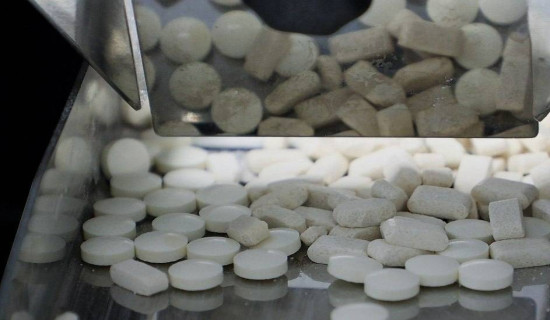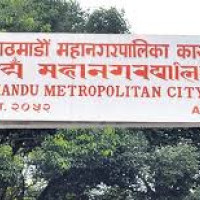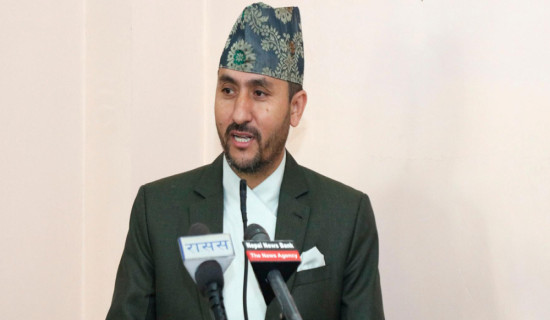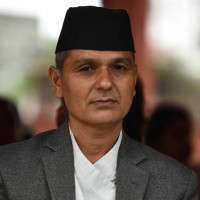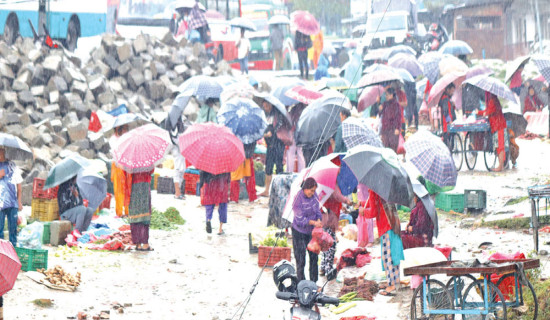- Sunday, 9 November 2025
Budget Implementation Review Low performance in capital spending, improvement in revenue mobilisation
Kathmandu, July 18:The government has once again fallen short in capital expenditure performance for the fiscal year 2024/25, with just 63 per cent of the allocated capital budget being spent, raising concerns about the government's ability to effectively implement development projects.
The statistics of the Financial Comptroller General Office under the Ministry of Finance showed that only Rs. 222.68 billion (63.2 per cent) of the Rs. 352.35 billion allocated for capital expenditure was utilised by the end of the last fiscal year on July 16.
This marks a slight reduction compared to the previous fiscal year, when 63.47 per cent (Rs. 191.73) of the capital budget was utilised. The government allocated budget of Rs. 302.20 billion under the capital heading for previous fiscal year 2023/24.
A similar trend was seen in earlier years as well. Despite repeated commitments from the government to improve budget execution and accelerate development works, the sluggish performance persists.
Only 61.44 per cent (Rs. 233.69 billion) of the total allocation of Rs. 380.38 billion under the capital heading was spent in the fiscal year 2022/23. In the fiscal year 2021/22, just 57.23 per cent (Rs. 216.37 billion) of the total allocation under the capital budget of Rs. 378.80 billion was spent.
"Capital expenditure includes investments in infrastructure, development projects, and other long-term assets that are crucial for economic growth. However, consistent underutilisation of the allocated funds raises long-standing issues such as project delays, weak planning, and bureaucratic hurdles," said economist Keshav Acharya.
He pointed out that low capital spending not only hampers infrastructure development but also affects job creation and private sector confidence.
At the mid-term review of the budget, the government had revised capital expenditure estimates to Rs. 299.50 billion (85 per cent of the original allocation), but actual spending fell short even of that amount, reaching only 74 per cent of the revised estimate.
"The private sector contributes 70-75 per cent to the total fixed capital formation, while the government contributes about 25-30 per cent. This means that for every rupee the government spends, the private sector spends about 3-4 rupees. When the government cannot spend properly, it affects private sector investment as well. The government's poor capital expenditure for decades has been directly affecting fixed capital formation, employment creation, and overall economic development," economist Acharya told The Rising Nepal.
With yet another year of underperformance, he urged the government to streamline project planning, enhance inter-agency coordination, and adopt result-oriented budgeting practices in the upcoming fiscal year.
Revenue mobiisation improves but still below target
According to the report, revenue of Rs. 1,178.82 billion was collected in the last fiscal year 2024/25. This is 83.06 per cent of the initial annual target of Rs. 1,419.30 billion. Out of total revenue collection, tax revenue stood at Rs. 1,049.87 billion or 81.75 per cent of the target and non-tax revenue stood at Rs. 128.94 billion or 95.45 per cent of the annual target.
During the last fiscal year, only Rs. 23.52 billion grant was received by the government. It is merely 44.97 per cent of the annual target of the government. The government had set an annual target of receiving Rs. 52.32 billion grant in the fiscal year that ended on Wednesday.
However, the government received Rs. 17.36 billion under other receipts in the last fiscal year.
Even though revenue collection was lower than the target, it increased by 14.41 per cent in the last fiscal year as compared to previous fiscal year.
The government had collected revenue of Rs. 1,030.34 billion during the fiscal year 2023/24. It was only 72.43 per cent of the annual target of Rs. 1,422.54 billion. The revenue collection target was lowered to Rs. 1,286 billion in the mid-term review. According to the revised target, 91.60 per cent of revenue has been collected.
Budget deficit reaches Rs. 303 billion
Meanwhile, budget deficit of the government reached about Rs. 303 billion in the last fiscal year 2024/25.
During the last fiscal year, the total income of the government stood at Rs. 1,219.71 billion. This is 82.88 per cent of the annual receipts target of government.
In the last fiscal year, the government spent Rs. 1,523.10 billion. The government was in deficit during the last fiscal year due to higher expenses than the total income. The government spent 81.87 per cent of the total budget allocation. The government had introduced a budget of Rs. 1,860.3 billion for the last fiscal year 2024/25.
The recurrent expenditure of the government stood at 85.95 per cent (Rs. 980.38 billion) during the last fiscal year. The government had allocated Rs. 1,140.66 billion under the heading of recurrent expenditure for the fiscal year 2024/25
Likewise, the government spent Rs. 320 billion under the heading of financing in the last fiscal year. That is 87.14 per cent of the total allocation of Rs. 367.28 billion.
However, the government had revised the income and expenditure estimates in the mid-term review of the budget for the last fiscal year. The Ministry of Finance had reduced the size of budget by about by Rs. 167.57 billion to Rs. 1,692.73 billion for the fiscal year.
By the end of the last fiscal year, the spending target was revised to 90.24 per cent (Rs. 1,029.30 billion) of recurrent expenditure, 85 per cent (Rs. 299.50 billion) of the capital expenditure and 99.09 per cent (Rs. 363.93 billion) of the financial arrangement of the initial allocations.
It is estimated that around Rs. 1,475.26 billion will be arranged from government sources (revenue and domestic borrowing), Rs. 36.62 billion from foreign grants and Rs. 180.83 billion from foreign loans by the end of the current fiscal year.



